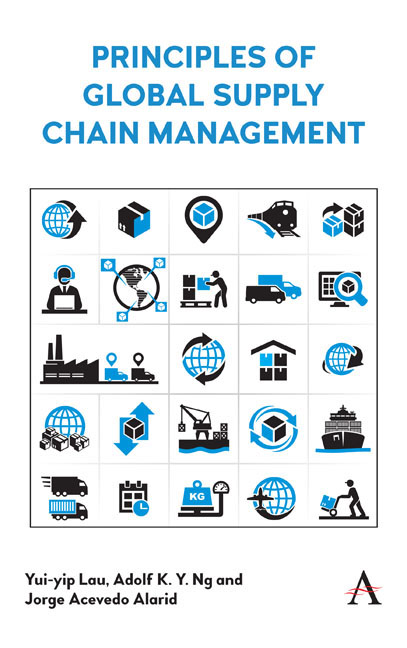Book contents
- Frontmatter
- Contents
- List of Figures
- List of Tables
- Foreword
- Preface
- About the Authors
- 1 Introduction
- 2 Managing Outbound Logistics and Distribution
- 3 Supplier Selection and Procurement
- 4 Warehouse Management
- 5 Case Studies in Food Supply Chains
- 6 Inland Ports in Global Supply Chains
- 7 Climate Change in a Global Environment
- 8 Sustainability in Infrastructure-Based Supply Chains
- 9 Reverse Logistics
- 10 Logistics Associations
- 11 Logistics Education
- 12 Case Exercises in Global Supply Chains
- Appendix
- Index
2 - Managing Outbound Logistics and Distribution
- Frontmatter
- Contents
- List of Figures
- List of Tables
- Foreword
- Preface
- About the Authors
- 1 Introduction
- 2 Managing Outbound Logistics and Distribution
- 3 Supplier Selection and Procurement
- 4 Warehouse Management
- 5 Case Studies in Food Supply Chains
- 6 Inland Ports in Global Supply Chains
- 7 Climate Change in a Global Environment
- 8 Sustainability in Infrastructure-Based Supply Chains
- 9 Reverse Logistics
- 10 Logistics Associations
- 11 Logistics Education
- 12 Case Exercises in Global Supply Chains
- Appendix
- Index
Summary
Outbound logistics is the downstream of supply chain management (SCM). The critical role of outbound logistics is to distribute products and services to final end users at the right time, to the right place, for the right people and at the right quality and quantity. In this chapter, we accomplish the following:
• understand the concept of SCM;
• investigate a supply chain strategy;
• explain the role of distribution in supply chains;
• analyze different distribution channels;
• compare different types of port operations, namely, container ports, midstream operations, dry bulk cargo terminals, liquid bulk cargo terminals, roll- on/ roll- off terminals and inland ports; and
• learn about Hong Kong's airfreight industry.
Supply Chain Management
The field of SCM emerged over a half century ago and continues to evolve. In the early 1980s, scholars began to connect SCM to “systems theory” and “holism” (New, 1997). In the 1990s, research on SCM significantly increased (Huan et al., 2004). However, the definitions of “supply chain” and “supply chain management” are not universally shared, with different scholars providing different perspectives. Before reviewing the role of outbound logistics in supply chains, we may develop a clear understanding of the supply chain. Thus, we examine some central concepts as follows.
Many scholars have tried to provide effective interpretations of SCM through different approaches. Simchi- Levi et al. (2009, p. 1) offered the following definition: “supply chain management is a set of approaches utilized to efficiently integrate suppliers, manufacturers, warehouses, and stores, so that merchandise is produced and distributed at the right quantities, to the right locations, and at the right time, in order to minimize systemwide costs while satisfying service level requirements.” SCM concerns the coordination of all activities related to the entire supply chain, starting with raw materials and concluding with a satisfied customer. The main objective of SCM is to reshape the supply chain to maximize an operator's competitive advantage over others (Heizer et al., 2017). In addition, Christopher (1992, p. 12) provided this explanation: “The supply chain is the network of organizations that are involved, through upstream and downstream linkages, in the different processes and activities that produce value in the form of products and services in the hands of the ultimate customer.”
- Type
- Chapter
- Information
- Principles of Global Supply Chain Management , pp. 9 - 36Publisher: Anthem PressPrint publication year: 2019



